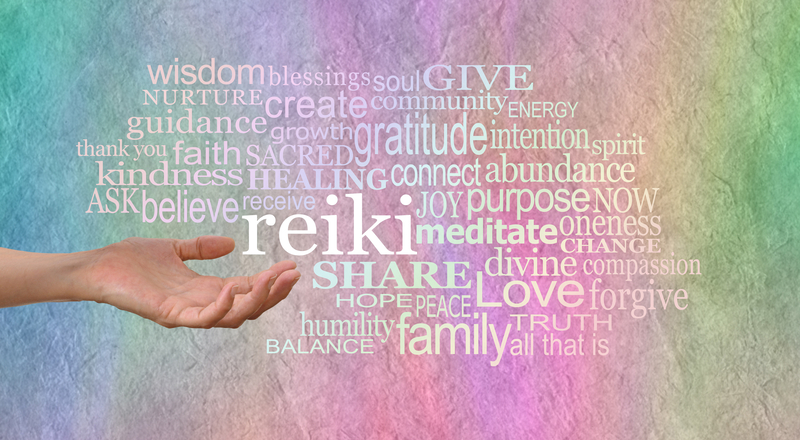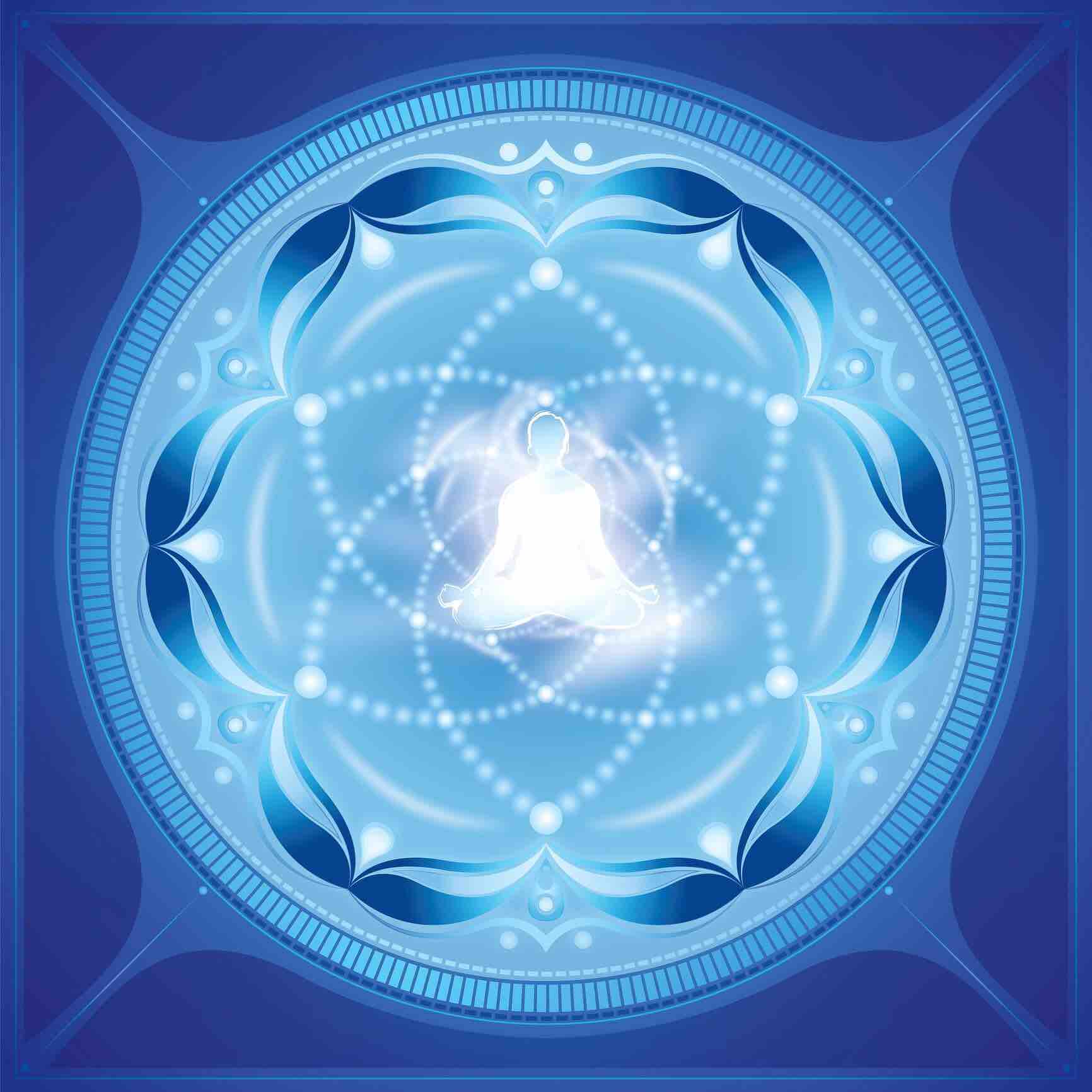Have you ever heard of Reiki and wondered what it was all about? Well, you are in luck as this is what this blog is all about! Reiki is a unique spiritual system based on healing. It is universal and has helped many people worldwide (with ample scientific proof).
The word Reiki is made up of two Japanese words – Rei which means “God’s Wisdom or the Higher Power” and Ki which is “life force energy”. So Reiki literally means “spiritually guided life force energy.”
Here we explain everything you need to know in order to understand the five Reiki principles, how it was created and how it works.
But let’s learn from the beginning…

The Origins of Reiki
Reiki therapy was created in 1922 by a Japanese Buddhist named Mikao Usui. He developed this system after having a spiritual experience on Mount Kurama, Japan. In this experience, he received the ability to heal others by using his hands. He then spent the next few years of his life perfecting his energy-healing technique and teaching it to others. It is nowadays part of complementary health therapy and holistic health.
Reiki is a Japanese word that means “universal life energy” (kind of like “Chi” in Chinese). Usui was searching for a way to heal people without using drugs or surgery. After years of study, he had a revelation that led him to develop the first system of Reiki. This is the system most people practice nowadays and it stimulates the body’s natural healing abilities to do its work using universal energy and people’s own personal energy.
So how does Reiki healing work? Basically, the practitioner channels reiki energy into the patient by placing their hands on or near them. This same energy is then used to heal physical, emotional, or mental imbalances in the patient. The effects of Reiki are cumulative, so the more treatments someone receives, the better they will feel.
How Does Reiki Work?
The theory behind Reiki is that there is an unseen universal life force that flows through all living things. When this life force is blocked or out of balance, it can lead to physical or emotional problems. Trained Reiki practitioners can place their hands on a person’s body in order to unblock and balance their life force, thus promoting healing. A typical Reiki session can cost between US$ 50 to US$ 300 depending on the level of the practitioner.
Many studies have been conducted on the efficacy of Reiki treatments, with some promising results. One study found that cancer patients who received Reiki healing treatments had less pain and anxiety than those who did not receive such treatments. Another study found that heart surgery patients who received Reiki therapy had shorter hospital stays and required less pain medication than those who did not receive treatments.
Many studies even reported that chronic health conditions and emotional pain can also be treated through a Reiki session. This obviously does not preclude regular medical treatment as, in many cases (especially acute problems), this is what the person needs. However, with its gentle touch, Reiki can restore balance, reduce pain and bring a lot of health.

There are five Reiki principles that must be followed in order for it to work
The five Reiki principles are simple yet powerful guidelines that can help you live a healthier and happier life. If you’re interested in trying reiki or incorporating it into your self-care routine, keep these principles in mind! They are also crucial for anyone aspiring to become a Reiki master teacher. And here they are:
The First Reiki Principle: Just for Today, I Will Not Worry
This principle is all about living in the present moment and letting go of worry and stress. When you worry, you are only focused on the future and what might happen. This can prevent you from enjoying the present moment and can lead to anxiety and other health problems.
The Second Reiki Principle: Just for Today, I Will Not Anger
Anger is another negative emotion that can prevent you from enjoying the present moment. It can also lead to health problems such as high blood pressure and heart disease. If you find yourself getting angry, try to take a few deep breaths and focus on the positive things in your life.
The Third Reiki Principle: Just for Today, I Will Do My Work Honestly
This principle is about being honest with yourself and others. It’s important to always stay true to your values and beliefs. When you are honest with yourself and others, you will find that life is much more rewarding.
The Fourth Reiki Principle: Just for Today, I Will Give Thanks for My Many Blessings
This principle is all about gratitude. When you are grateful for what you have, you will attract more good things into your life. Make it a point to each day think of at least three things that you are grateful for. This could be something as simple as your bed or your favorite food. As I always say “wear gratitude like a cloak“.
The Fifth Reiki Principle: Just for Today, I Will Be Kind to Every Living Thing
This final principle is about compassion. It’s important to be kind not only to other people but also to animals and the environment. When you show compassion to others, they will often reciprocate. This can create a ripple effect of kindness that can make the world a better place.
These five Reiki principles are crucial in order for you to begin feeling your personal energy and opening up your spirit. These should be kept in you like a mantra and will help you also receive divine guidance.
They will also help you with receiving the so-called Reiki attunements, which is what we will speak about now.
Levels of Reiki Attunement
There are three levels of Reiki training: first-degree, second-degree, and third-degree. In first-degree training, students learn how to perform treatments on themselves and others. Second-degree training teaches students how to use symbols to send energy over long distances, and third-degree training gives students the knowledge and ability to teach others.
Here’s a brief description of each of them:
Shoden: The Foundation Level
As mentioned before, Shoden is considered the foundation level of Reiki training. In order to be eligible for attunement, one must first complete this level. During Shoden training, students will learn about the history of Reiki, the hand placements for self-treatment and treatment of others, as well as how to conduct a complete reiki treatment. Students will also be introduced to the first-degree reiki symbol and its meaning/purpose. Finally, students will receive their first attunement from their instructor which will allow them to begin using reiki for themselves and others.
Okuden: The Intermediate Level
Okuden builds upon the foundation set in Shodenand introduces additional techniques and symbols. In order to be eligible for Okuden training, one must first have completed Shoden and received their first attunement. During Okuden training, students will learn about additional hand placements for self-treatment and the treatment of others. Students will also be introduced to additional Reiki symbols and their meanings/purposes. Finally, students will receive their second attunement from their instructor which will allow them access to these additional techniques and symbols so that they may use them in their practice.
Shinpiden: The Master Level
Shinpiden is considered the most advanced level of reiki training and introduces students to the new skills necessary for attuning others to either Shoden or Okuden (or both). In order to be eligible for Shinpiden training one must first have completed Shoden and Okuden training as well as receiving their first two attunements from an instructor. During Shinpiden training students will learn about the process of attuning others to either Shoden or Okuden degrees of Reiki along with the required hand placements and symbols needed to do this. Students will also begin their own journey towards mastery by receiving their third attunement from an instructor which will allow them access to these new skills so that they may begin using them in their practice.
Becoming a certified Reiki master teacher is no easy feat but it is achievable with time, dedication, and practice. If you are interested in becoming a reiki practitioner, be sure to look into taking a Reiki course so that you can get started on your journey.
What is the Reiki Attunement?
As we spoke before, Reiki attunement is the final step in becoming a certified Reiki healer. In order to become attuned, one must first be attuned to the first degree of Reiki, also known as Shoden. Shoden is considered the foundation of Reiki training and allows the student to begin using Reiki for themselves and others. Once the student has completed Shoden, they are then eligible for Okuden, or the second degree of Reiki. Okuden builds upon the foundation set in Shoden and allows the student to begin using symbols in their practice. Finally, once the student has completed Okuden, they may participate in Shinpiden or Reiki master-level training. Shinpiden is the most advanced level of Reiki training and allows the student to attune others to all three degrees of Reiki.
First, you must find a qualified instructor who can teach and help you through the Reiki attunement process. Once you have been attuned to first-degree Reiki, you will need to practice using it on yourself and others. After you have gained some experience with first-degree Reiki, you can then move on to second-degree attunement. Again, once you have been attuned, you will need to practice using the new symbols before moving on to third-degree attunement. Finally, once you have been attuned to third-degree Reiki, you will be able to pass attunements onto others and officially become a certified Reiki master teacher!
Reiki attunement is the final part of the certification process and it’s what makes you a certified healer. Once you’ve completed your attunement, you’ll be able to channel healing energy through your hands to help others. The process of attunement is actually quite simple; it’s done through an energy transfer from a Reiki Master to the student. This energy transfer opens up the student’s energy channels, allowing them to access the universal life force energy that is used for healing.
Concluding remarks
Reiki is a powerful and effective healing modality that can be used to treat a wide variety of issues. If you are looking for an alternative form of treatment, Reiki may be right for you! You can practice it on your own since you don’t need the physical presence for it to be effective.
As we have seen, Reiki therapy is a unique spiritual system based on healing that has helped many people worldwide. If you’re curious about how it works, we hope this blog post has given you a better understanding of the practice. Remember, if you ever have any questions about Reiki, be sure to ask a trained practitioner for more information!
This complementary therapy is a powerful healing system that can be used by anyone regardless of their spiritual beliefs. If you are interested in learning more about its healing techniques, I encourage you to seek out a qualified instructor and sign up for training.
The path to becoming a certified Reiki master teacher is an enjoyable one that takes practice and dedication. If you’re interested in becoming a healer, find a Reiki Master and begin your journey today!
Thanks for reading,
Elaine








